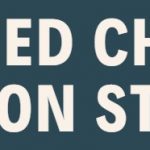As I will be graduating in May 2022, learning about the role of Indigenous communities in relation to the science courses that I have taken in the past, was a great way to wrap up my undergraduate degree. The two-eyed seeing approach is a framework that I will use to approach conservation issues that I will encounter in my career. It reminds me to not assume that Western science is the only truth, but that there is other important knowledge that we can gain from Indigenous communities and other cultures. Reid et al. pointed out how Indigenous fisheries are rooted in sustainability and in “protecting the present and future well-being of fish, people and place” (2022, p. 253). I hope to carry this perspective forward into the work that I do.
Reid et al. (2021) mentioned how Western scientists analyzed water quality in Indigenous communities and concluded that the quality was moderate. However, Indigenous communities said the water was not good. This example made me think about the boil water advisories in Indigenous communities in Canada and how the government, which bases its foundation in Western science, is ignoring and pushing away these water concerns. Currently, there are still 227 boil water advisories in BC alone (Water Today, 2022).
Dr. Megan Bailey brought up the question of who has the right to collect data and what data is valued. Western science is often seen as superior, which made me realize how there is epistemological injustice between Western science and Indigenous ways of knowing. From the TED talk, it was sad to hear how Rebecca Thomas was reflecting on how Indigenous communities have been adapting to the Western way for all these years, so they are now asking for the Western community to understand them. This would result in a more reciprocal and just relationship, instead of having Western communities gain from the Indigenous communities’ loss. Reflecting on how Western knowledge is often valued more, it made me question my experience in university over the past 5 years. At UBC and at most universities, we are not required to take any Indigenous courses and our assignments were mainly based around academic, peer-reviewed information. I am grateful that my program is very flexible, so I had the opportunity to take an Indigenous course with Dr. Charles Menzies, but I hope that more students and institutions will have the opportunity to learn about Indigenous history and courses. This realization that education often perpetuates certain views above others makes it difficult for me to think about my future. It makes me question a lot of the learning that I have been through, but I have hope that through humbly learning and applying the two-eyed seeing framework, I can become more aware of this bias and move away from it.
Goodbye Snauq mentioned how the Indigenous, Black, Chinese, and Jewish communities faced discrimination from the Whites in the early days. The part that I connected with the most was when Lee Maracle described the Chinese immigrant experience in Canada. The Chinese could not live outside of Chinatown and it was even burned at one point. Goodbye Snauq connected to my training and career plans because aside from studying conservation, I also took Asian studies during my undergraduate degree. Even though it is disturbing how Indigenous, Chinese, and other communities faced discrimination, it is heartwarming to see different cultures working together and supporting each other. I learned from my other class about Elder Larry Grant’s family (film: All Our Father’s Relations) and how they grew up as a Musqueam-Chinese family and how they faced discrimination. I hope to pursue a career that involves working with social and environmental issues, to combine my education on conservation and Asian studies.
Dr. Andrea Reid’s activity about what water we feel the most connected to made me realize that I did not know much about the water sources around me. At the beginning of the activity, I was struggling to think of a waterway. I was not sure if I was correct with their names or geography. I did not know where the Fraser River becomes the Pacific Ocean and which one I should share about. I eventually picked the Pacific Ocean because it connected me to my relatives in Hong Kong, but it was also the first time that it hit me how the ocean is so vast and how it connects such distant places together. I plan to learn more about the Fraser River, the Pacific Ocean, and the fish stocks within them, which is what Dr. Muhammed brought up as one of the steps we should take as a global citizen.
Reflecting on my past, I noticed that I tend to think my perspective is usually correct, but after learning about the two-eyed seeing framework, I need to understand that there are other perspectives as well. Dr. Bailey brought up how the Inuit communities’ response to research is “Nothing about us without us”. During that discussion, we were also reminded that within our projects, our goal is to not gain approval from an ethics board, our goal is to research ethically. I hope to carry these pieces of advice forward as I plan on working with communities in the future. I also plan to learn more about the OCAP (Ownership, Control, Access, and Possession) framework in the future.
References
Reid, A. J., Eckert, L. E., Lane, J., Young, N., Hinch, S. G., Darimont, C. T., Cooke, S. J., Ban, N. C., & Marshall, A. (2021). “Two‐Eyed seeing”: An indigenous framework to transform fisheries research and management. Fish and Fisheries (Oxford, England), 22(2), 243-261. https://doi.org/10.1111/faf.12516
Water Today. (2022). Daily Updated Map of Canada’s Boil Water Advisories (BWA). Water Today. Retrieved April 5, 2022, from https://www.watertoday.ca/map-graphic.asp


